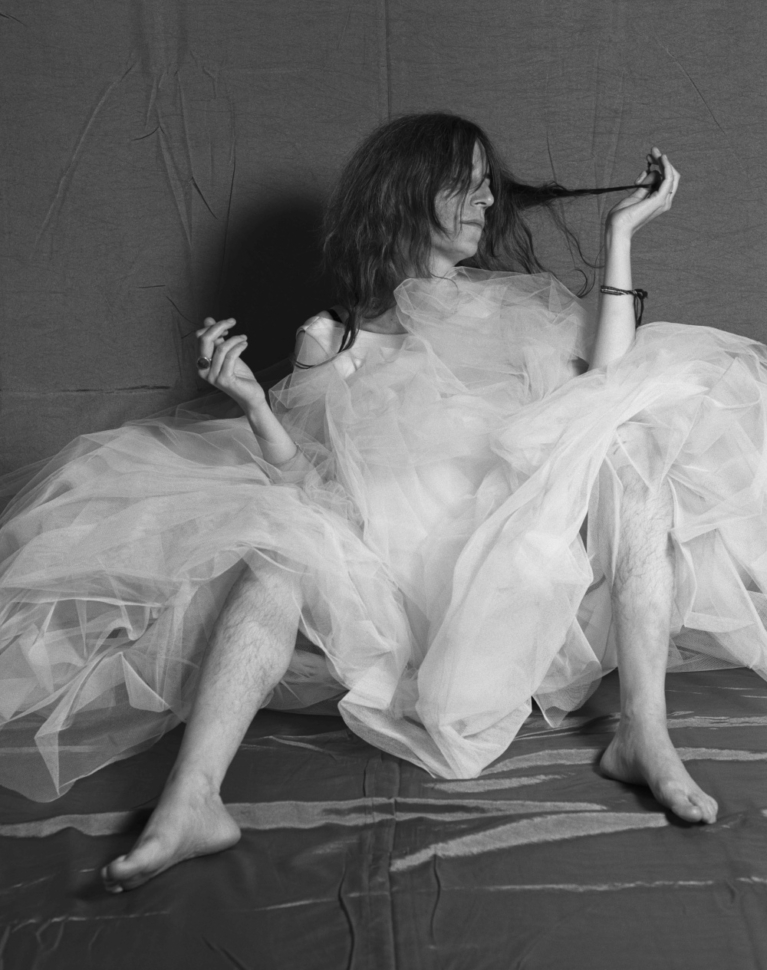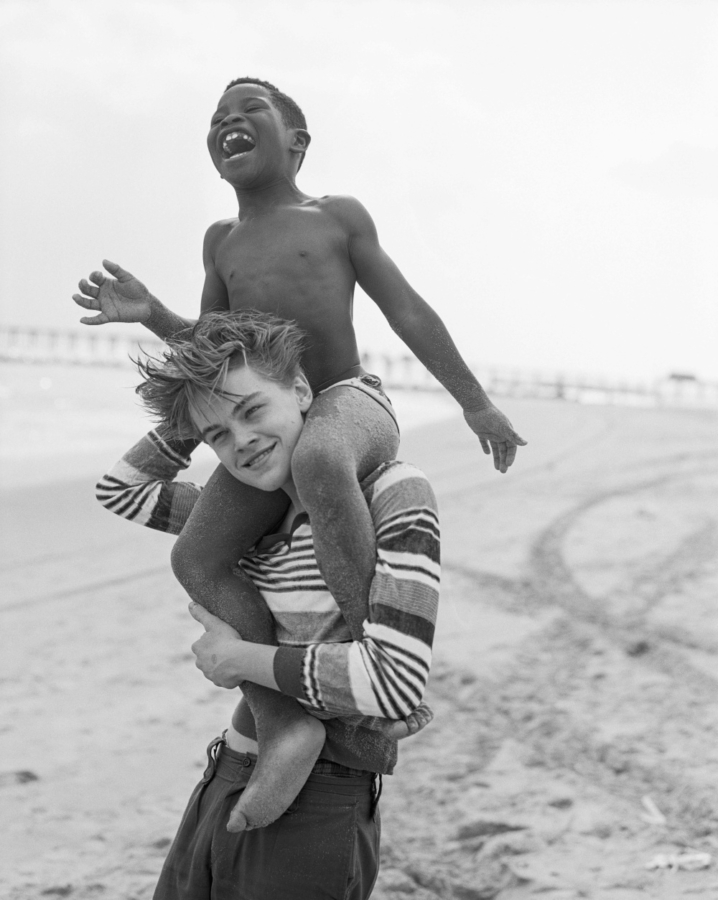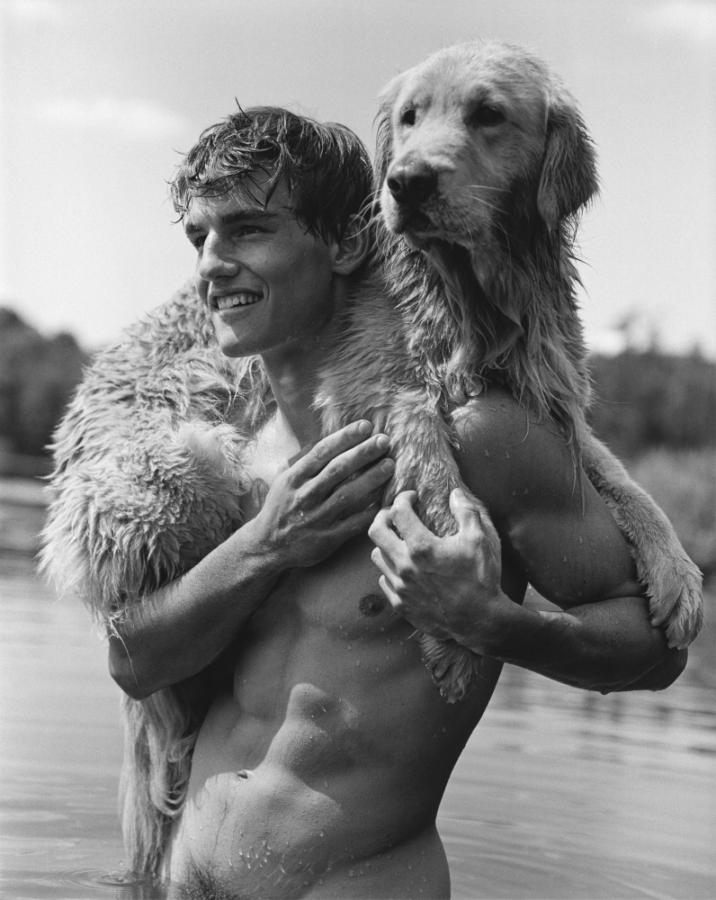Shirtless men, Icons, Jazz and Dogs Pavlína Vogelová
He has influenced the spheres of art, showbusiness, the fashion industry and the corporate world, challenging traditional ideas of beauty and masculinity. The Prague City Gallery exhibits the photographs by Bruce Weber.
Photography, film, fashion and lifestyle inherently operate in a dynamic turbulence of influences, mutually enriching and shaping one another. This almost symbiotic relationship elementally changes boundaries and lifestyles, and breaks down stereotypes of social and societal forms and norms. Despite the acceleration of development in all directions, the analogue trace of photography and photojournalism remains an important, powerful and vivid image of society in the second half of the twentieth century. In the depth of its understanding of particular social issues, it provides unique material for research into social, cultural, artistic, and political changes in the perception of visual history and the history of society as a whole.
An example is the American photographer and filmmaker Bruce Weber (29 March 1946, Pennsylvania) with his distinctive style of black and white photography in commercial advertising. Bruce Weber‘s photographs are a celebration of the nature of the human body, light, time and space. He has profoundly influenced the realms of art, show business, the fashion industry and corporate entities with his sensitive artistic creativity. Weber‘s classic analogue photography continues to command respect. He has the ability to make the most of the intimate space of the objectification of the human body. Behind the captivating nature of Weber‘s images lie naturalness, minimalist aesthetics, authenticity and a hint of informality. Weber‘s ability to capture the essence of his subjects and understand brand purpose has significantly pushed the qualitative boundaries of the fashion photography genre. His photographs literally redefined fashion advertising and cemented Weber‘s position as the world‘s leading photographer of fashion and consumer culture.
In the 1980s, Bruce Weber became famous for his advertising photographs and campaigns for the Calvin Klein brand. Bruce Weber worked with Calvin Klein from 1979 to 1991. A brief look at the history of fashion photography shows that the images typical of the early days of fashion, when models posed stiffly in photographic studios, have long gone. The legitimate art form of fashion photography was directed by pioneers such as Edward Steichen (1879-1973) and Cecil Beaton (1904-1980) who began to use artificial lighting and elaborate set design. In the mid-twentieth century, fashion photography began to build on dynamism and experimentation through movement, bold compositions and powerful narratives, as seen, for example, in the work of Richard Avedon (1923-2004) and Helmut Newton (1920-2004).
Bruce Weber‘s influence on fashion photography is undeniable. His photographic know-how lies in his ability to visually capture the essence and substance of brands such as Versace, Calvin Klein, Ralph Lauren and others. Fashion photography is purposefully emotional in nature. It is thus a purely value-based business strategy for fashion brand owners, embodying originality, uniqueness, power and influence. This is also reflected in the choice of the artist, which visually shapes certain semantic strategies of the brand. This points to exchange and market factors and constructs an imaginary economy of society, lifestyles, or relationships across a wide range of social issues.
Bruce Weber‘s photographs exemplarily construct an aesthetics of the perception of photographs that are primarily used for promotion and advertising. Bruce Weber studied photography and film at the New School for Social Research in New York with Lisette Model. Her contribution was primarily in debating the meaning of photography, the lived situations, conditions and phenomena that are worthy of photographic record. During further studies at New York University, he began his professional photographic career by working with the editorial offices of the prestigious magazines Soho Weekly News, Vogue, and Vanity Fair, as well as the underground magazine Detail. He had already published in GQ magazine in the late 1970s, and in 1985, he was a guest editor of the Italian Per Lui magazine. This magazine for young men covers a wide range of topics, from architecture and art to entertainment and business. His lifelong focus on shooting for magazines and brands was the logical outcome.
In addition to Weber‘s photographs for the fashion world, his photographs and film footage of several musical genres, especially jazz, are also worth noting. Jazz, characterised by its improvisational nature and rich emotional depth, undoubtedly shares a strong synergy with photography and film. For Bruce Weber, it thus represents a strong subject, into which he imprints his unique aesthetic, intimacy and evocative atmosphere. Weber‘s shots of Chet Baker, Wynton Marsalis and Dizzy Gillespie, among others, are worth highlighting. Weber excels at depicting intimate portraits, emphasising the personality, emotionality and narrative interaction of individuals / musicians with their instruments. He adeptly portrays the backstage atmosphere of the music world, enriched by the very often unplanned and unrepeatable sessions of the artists.
Magazines, album covers, posters, brand names, advertisements and now also social networks have drawn our attention to an unprecedented era of people-watching. Photography consequently plays a much more dominant role in confronting desires and feelings than ever before. The digital revolution has completely changed our concept of not only fashion photography. New editing software offers a plethora of possibilities for experimenting with images, opening up diversity not only in the approach to visual culture, but also in a wide range of new topics open for debate. These include depictions of masculinity, intimacy and human vulnerability, as well as polemics about the objectivity and idealisation of both objects and subjects.
Bruce Weber has undoubtedly contributed to challenging traditional ideas of beauty and masculinity with his photographs. Through his photographs for commercial purposes, on the other hand, he has supported arts organisations, positive changes in society, tolerance, and quality relationships and living conditions for humans and animals. Photographic and fashion images, along with their memory, have become an inescapable link to society through their depiction of the world of human society, gestures, behaviour and relationships. They interact with each other as a discursive system of information exchange, as an open platform of memory operating with the past in a critical discourse of questioning its original meaning and function. Fashion photography will undoubtedly remain a fashion phenomenon. But local traditions and cultures will certainly rise in importance again, which could lead to a more varied and diverse fashion landscape. If we look at Bruce Weber‘s photographs from the perspective of an associative approach to the memory of photography, they represent an inescapable link to society in the way in which they describe the complex world of human society through gestures, behaviour and relationships. The photographic image works with time, influence and power, and undoubtedly disrupts the status of the once „immutable truth“ of the photographic image. Long-term value is affirmed above all by the meanings of the photographs, which may also hold the promise of new interpretations. High-quality images will withstand this scrutiny.
The author is a curator of photography and film at the Department of Modern Czech History of the Historical Museum section of the National Museum



